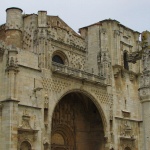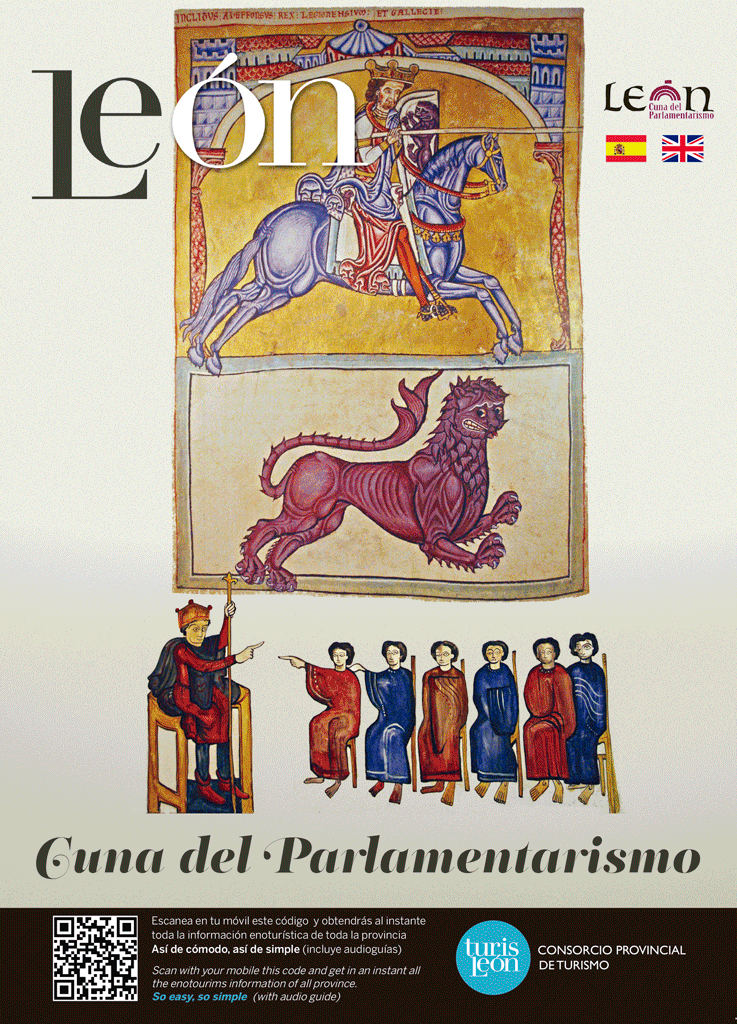THE CONVENT OF SAN MARCOS
City: León
The scallop shells indicate its bonds with Saint James’ Way. In fact, it was built after the donation by Princess Sancha in the 12th century, with the intention of erecting a temple and hospital outside the city walls, next to the Bernesga river banks, to “lodge the poor of Christ” in Saint James’ Way.
In the early 16th century, King Ferdinand the Catholic requested a new convent complex on the ruins of the old medieval building. Conceived as Casa Mayor de la Orden de Santiago (“Great house of the Order of Saint James”), San Marcos is one of the most outstanding works of Hispanic Renaissance.
Attention can be drawn to the façade, a good example of plateresque modelling: elegant and restrained. Its muro de dos cuerpos, finished off with hung crestings and atanchions, shows medallions at the baseboard with characters from Ancient Greece and Rome or the History of Spain. In the upper baseboard there are angels’ heads. The most interesting elements in the building complex are two niches, one in each tower of the church. The left one, by Juan de Juni, represents the Descent from the Cross; the right one, by Juan de Orozco, represents a Calvary and it has a stone against the wall showing the temple’s conclusion on June 3rd 1541.
Inside the building, there is the Chapterhouse, with a beautiful coffered ceiling from the 16th century. You can also visit the Classicist cloister, built in three distinct moments (16th, 17th and 18th centuries), and yet unitary and harmonious. Worthy of attention are its sculptures and the relief of The Birth of Jesus by Juan de Juni. The church, whose style belongs with the last Hispanic Gothic style, is framed by two aforementioned unfinished towers. Between them, the portico is covered up by ribbed vaulting.
The Convent of San Marcos was a guest quarters for pilgrims, the headquarters of the Veterinary School, a school for the Society of Jesus (or Jesuit school), Cavalry Barracks and even a prison. Within its walls, Spanish writer Francisco de Quevedo was an inmate between December 1639 and June 1643. Since 1964, it has been an outstanding Parador Nacional de Turismo (National, State-Run Hotel House).
The church
Attached to the hotel, the Church of San Marcos has a late gothic style with just one nave and a magnificent golden set of chairs, carved in walnut wood. It is one of the most remarkable ones in Spanish Renaissance. Juan de Juni and Guillermo Doncel left their mark in here.
USEFUL DATA
More information:
IMAGES




